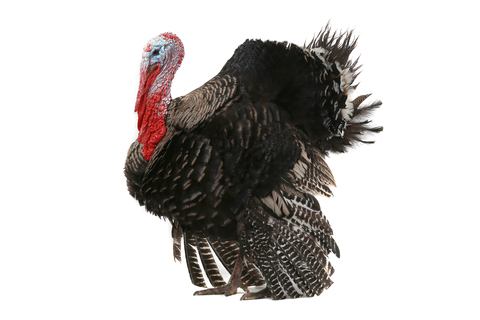How to Identify a Wild Turkey
Wild turkeys are known for being wary, constantly alert to movement around them. This ability is vital, since the large, plump birds make inviting meals not only for families around Thanksgiving, but for a variety of predators as well. Male turkeys can be identified by their fan-shaped tails, fleshy red wattles and snoods on their beaks, and dark, mottled plumage with a bronze-green sheen. Their small, bare-skinned heads may be bright blue or red. By contrast, females look drab and are about half as large. The pests use their slender but strong legs and clawed feet to remove debris while they look for nuts, berries, snails, and insects.

Habitats
Once almost hunted to extinction, wild turkeys are making a big comeback across the United States. The pests favor densely forested areas, though they may also move into backyards and fields to seek out food or mates. They can typically be found foraging during the early morning and making loud gobbling noises that carry long distances. While sometimes confused with ring-necked pheasants, grouse, and other game birds, turkeys are larger by far. They are further identified from pheasants by their large tails and from grouse by their featherless heads.
Turkey Problems & Removal
Turkeys can remember their food sources, so failing to secure garbage cans, cover garden crops, or clean up spilled birdseed is likely to keep the pests returning to yards. When they get used to humans, these large birds may become quite intimidating as they try to assert dominance over people and pets. Aggressive males even attack their own reflections in shiny cars and windows during mating season. Since wild turkeys can carry chlamydiosis and salmonellosis, which are transmissible to humans, homeowners should rely on the professionals at Critter Control to identify and handle these pest birds.